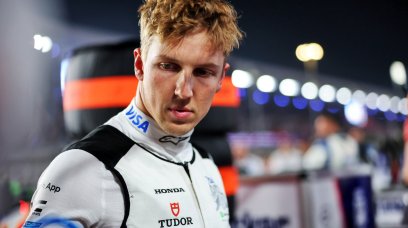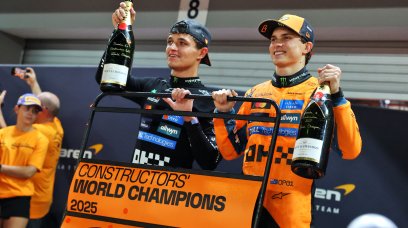Ferrari's first extensive upgrade package for the F1-75 may be planned for the Spanish Grand Prix, but the team are making some early moves in Miami – despite it being a new track. As team boss Mattia Binotto outlined in Imola, a new rear wing - with a different main profile - will be introduced this weekend as a replacement for the versions used so far this season. But this is not set to be the biggest change as, during the Pirelli tyre tests that followed the Emilia Romagna weekend, Carlos Sainz briefly drove with a new floor. This floor was seemingly first trialled by teammate Charles Leclerc in Australia, meaning Ferrari could bolt it onto their car again for the Pirelli test, as per F1's current regulations.
A new vertical strip has been placed diagonally, next to the Venturi tunnels (red arrow).
What's involved in Ferrari's new floor design?
Featuring an updated lateral edge with an ogival cut, the new floor arrangement also offered a glimpse of an additional, vertical strip, placed diagonally (see image above) – a type of skid block that should prevent the floor from deforming in the area in front of the rear wheels. Ferrari's update appears to be a similar concept to the same section on the floor of Red Bull's RB18, with the two teams at the start of an intriguing development war. Apparently, these metal elements play a role in reducing the oscillations brought on by porpoising when the car is running along the straights, but above all, they greatly increase the trigger speed. Simply put, porpoising would not only be softened in the final stage, but the phenomenon would appear much less frequently. By increasing the speed at which the jolting begins, the overall effects of porpoising are shifted on, almost coinciding with the moment braking begins – the slowing down of the car 'turning off' any jolts. Porpoising is inevitable, connected to the increase in speed and load generated by the floor, which causes the diffuser to stall. By controlling the stall, thanks to the adoption of the new floor, the jolts should be minimised and the drivers look set to enjoy a smoother ride.
Note the profoundly different conformation of the new floor,characterised by a deep, ogival cut, which reveals the underlying presence of avertical strip - placed diagonally - aimed at preventing the deformation of thefloor when the car bottoms at maximum speed.
Better for the drivers, better for performance
The benefits of reducing these porpoising effects are clearly not limited to what the drivers feel behind the wheel, though, as there would be an undeniable impact on the car's performance – in terms of stability and aerodynamic efficiency. By reducing the jolts, the tyres would work better and not suffer the induced pressure and grip losses that the phenomenon generates. From theresolution, or rather, careful management of porpoising, it also creates the opportunity to try different set-ups and configurations that maximise theaerodynamic performance of the car, without potentially making the phenomenon worse. The close fight between Ferrari's F1-75 and Red Bull's RB18 will no doubt continue at the Miami International Autodrome.
Most read









